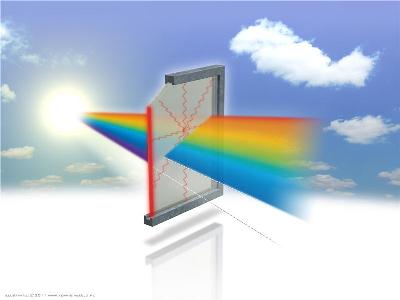A student from TU Delft has shown the association between the maximum amount of power that can be generated by power-generating windows and the color of material used for luminescent solar concentrators.

stroomramen_groot
Power-generating windows have a thin film of material that has the ability to absorb sunlight and direct it to narrow solar cells that are located at the window’s perimeter. Jan Willem Wiegman, a student pursuing Applied Physics Master’s at the university performed this research and has calculated the amount of electricity that can be generated using the luminescent solar concentrators in windows.
These energy sources using luminescent solar concentrators are economical and will help Europe meet its ambition to maximize the energy neutrality of buildings. These solar concentrators can be used in glazed facades and windows of residences and commercial buildings. The narrow solar cells which are located at the window’s perimeter convert sunlight into electricity.
Transparent films have the capacity to produce 20 W/m2 of power. This designates 2% efficiency. When the film is able to absorb more number of light particles its efficiency increases. Efficiency can be increased by using foils that have the ability to absorb light particles of specific colors. Absorption of violet, green and blue particles will impart a red color to the window. When the foil absorbs all the colors equally, it will lead to a grey color for the window. Films having grey and red colors demonstrate an efficiency of 9%.
The researcher also showed that a smooth film surface was important for efficiently transporting light particles.
The article has been published by the researchers in Solar Energy Materials and Solar Cells journal.
Disclaimer: The views expressed here are those of the author expressed in their private capacity and do not necessarily represent the views of AZoM.com Limited T/A AZoNetwork the owner and operator of this website. This disclaimer forms part of the Terms and conditions of use of this website.